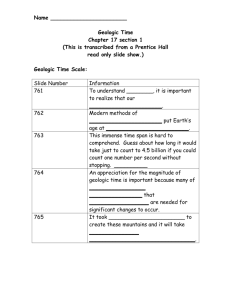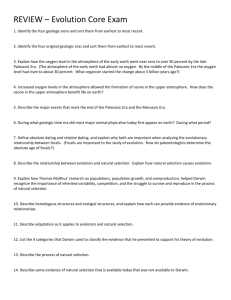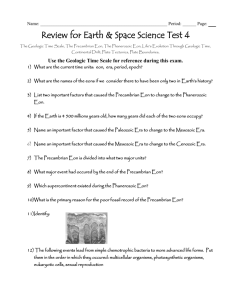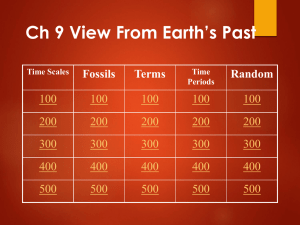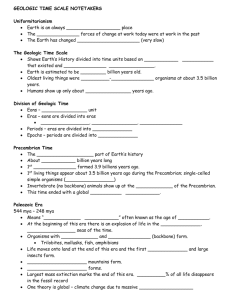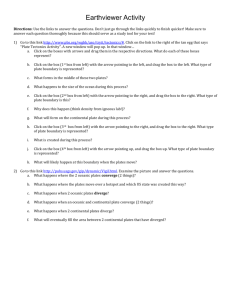Your Name ______ Date ______ Chapter 9 Earth Science Word
advertisement
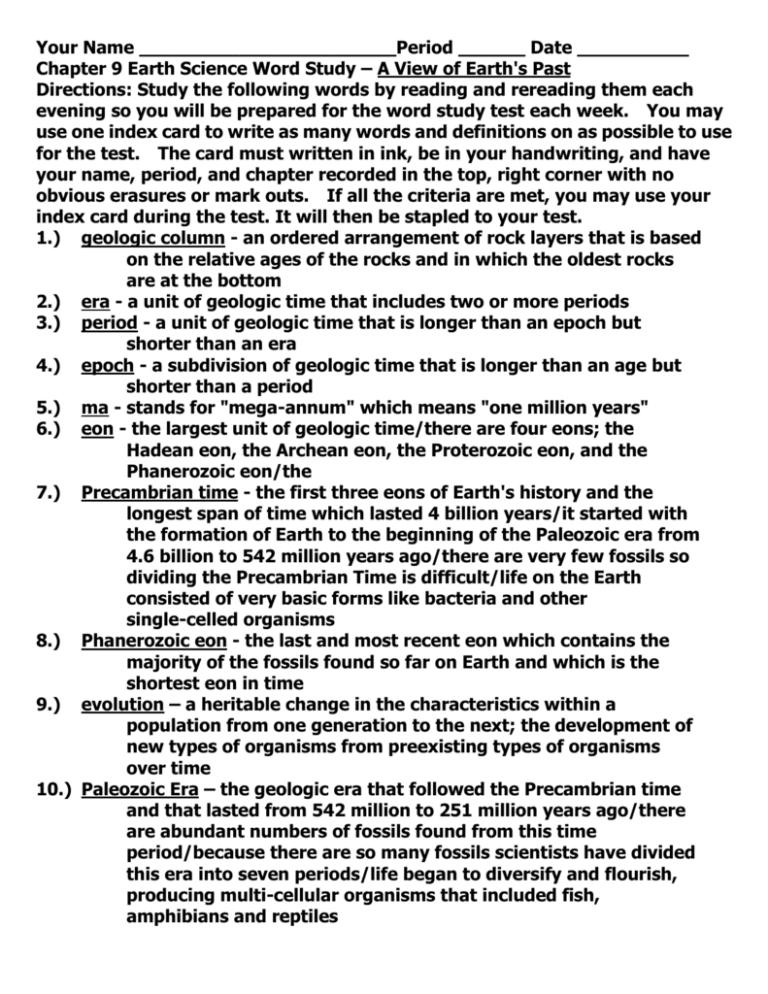
Your Name _______________________Period ______ Date __________ Chapter 9 Earth Science Word Study – A View of Earth's Past Directions: Study the following words by reading and rereading them each evening so you will be prepared for the word study test each week. You may use one index card to write as many words and definitions on as possible to use for the test. The card must written in ink, be in your handwriting, and have your name, period, and chapter recorded in the top, right corner with no obvious erasures or mark outs. If all the criteria are met, you may use your index card during the test. It will then be stapled to your test. 1.) geologic column - an ordered arrangement of rock layers that is based on the relative ages of the rocks and in which the oldest rocks are at the bottom 2.) era - a unit of geologic time that includes two or more periods 3.) period - a unit of geologic time that is longer than an epoch but shorter than an era 4.) epoch - a subdivision of geologic time that is longer than an age but shorter than a period 5.) ma - stands for "mega-annum" which means "one million years" 6.) eon - the largest unit of geologic time/there are four eons; the Hadean eon, the Archean eon, the Proterozoic eon, and the Phanerozoic eon/the 7.) Precambrian time - the first three eons of Earth's history and the longest span of time which lasted 4 billion years/it started with the formation of Earth to the beginning of the Paleozoic era from 4.6 billion to 542 million years ago/there are very few fossils so dividing the Precambrian Time is difficult/life on the Earth consisted of very basic forms like bacteria and other single-celled organisms 8.) Phanerozoic eon - the last and most recent eon which contains the majority of the fossils found so far on Earth and which is the shortest eon in time 9.) evolution – a heritable change in the characteristics within a population from one generation to the next; the development of new types of organisms from preexisting types of organisms over time 10.) Paleozoic Era – the geologic era that followed the Precambrian time and that lasted from 542 million to 251 million years ago/there are abundant numbers of fossils found from this time period/because there are so many fossils scientists have divided this era into seven periods/life began to diversify and flourish, producing multi-cellular organisms that included fish, amphibians and reptiles 11.) mass extinction – an episode in geologic time in which large numbers of species become extinct/many scientists believe there have been at least five of these types of events 12.) Mesozoic Era – the geologic era that lasted from 251 million to 65.5 million years ago; this era is also called the “Age of Reptiles”/there are three periods in this era/Birds and mammals first appeared during this era as well. 13.) Cenozoic Era – the current geologic era, which began 65.5 million years ago; also called the “Age of Mammals”/there are three periods in this era/This era is identified by the widespread development of mammals, including the human species.



